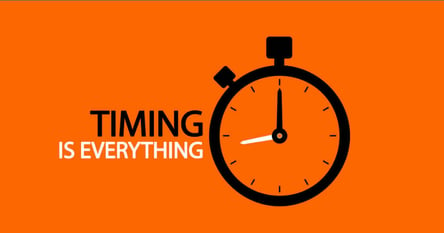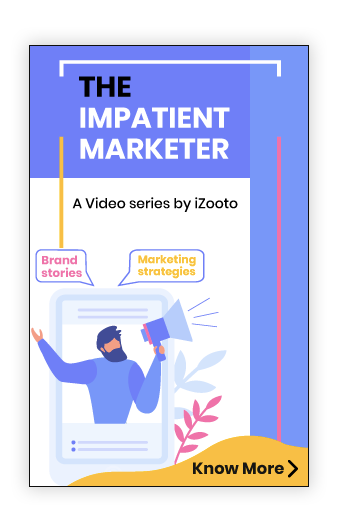What is RSS Feed?
RSS (Rich Site Summary; originally RDF Site Summary; often called Really Simple Syndication) uses a family of standard web feed formats to publish frequently updated information: blog entries, news headlines, audio, video etc.. Many news-related sites, weblogs and other online publishers syndicate their content as an RSS Feed for their audience.
How does RSS work?
RSS works by having the website author maintain a list of notifications on their website in a standard way. This list of notifications is called an "RSS Feed". People who are interested in finding out the latest content can check this list. Producing an RSS feed is simple and now provided by many of websites.
________________________________________________________________________________
Ray is an amateur hiker on the East coast who often blogs about his hiking trips, experiences, things to do. Ray blogs frequently and despite his busy schedule is able to push out 2-3 posts a week. Over the years, Ray has built a great following across US, Canada and Europe. Ray typically gets to writing on a weekend night and given no writer’s block, he is able to publish on the same night. Ray recently implemented a web push notification plugin and plugged RSS feed with push notification updates - essentially automating sending updates to his readers. The idea and the intent was simple - The result was a bit funny. Within a week, Ray actually lost quite a few subscribers.
We all know what happened here. The problem with plugging the RSS feed directly with your web push notification plugin is two pronged.
Timing

If you are anything like Ray ( I am ), your blog gets updated in the middle of the night or at weird hours. There is nothing wrong about that. You should write and publish when you are in the groove, but should your users get intimated at that time? Via Email, yes - because emails unlike notifications go to inbox. Web push notifications popup hit your device screen. On mobile the experience is far more controllable because the notification can be delivered to the notification tray. The real challenge pops up when the notification is delivered to Desktop. Desktop unlike Mobile doesn’t have a notification try. Chrome had a notification center which they killed sometime back. Yes, Chrome now supports native notifications on Mac but it’s still in beta and we are yet to see the same solution for windows. At a given point in time, the desktop screen can show upto 4 notifications only. Now picture this -
Vicky is an avid traveler based out of Gent, Belgium. Vicky also happens to be one of the subscriber of Ray’s blog. Vicky is a voracious reader and because she likes reading, she has subscribed to quiet a few websites for their notifications. When Vicky logged on to her PC this morning, she already had 20 notifications waiting for her but again she had an important deliverable, so she literally had to close all the notifications without even looking at them. Even the one which Ray had sent. She went on a “closing spree” for almost 2 mins and then started her work with a sigh.
Web Notifications experiences can be frustrating, especially on Desktop. Web Notifications are delivered only when the device is connected - and in case of PCs or Desktop’s every time a user logs on and fires the browsers, notifications stacked in the queue are pushed immediately to the device. End result - users end up ignoring these notifications. This is exactly what happened with the notification that Ray had sent and Vicky had subscribed for.
Lack Of Personalization

Marketers across the globe are moving towards personalization. From a spray and pray approach, tables have turned where marketers are scouting for additional data sources to add more context to their end user communication. Blind Automation by plugging the RSS feed into the web push notification channel can be quite literally, devastating. This fundamentally impacts three factors
- Overall Click Through Rates go for a toss. Nothing surprising here
- Users start unsubscribing from notifications
- Or users stop responding
You end up being where you started from - still searching for a magical wand to improve your user engagement.
The Right Way Of Automating RSS Feed And Web Push Notifications For Your Blog’s Subscribers
Here are some basic points that you need to take care off before switching on the automation switch -
 Rule # 1 Local Time Zone Effects
Rule # 1 Local Time Zone Effects
Thanks to the internet, the world is your oyster. And there is no reason why your blog will not have subscribers from time zone outside yours. And if you don’t want to create experiences like the one Vicky had, you need to ensure that even with automation, notifications are delivered basis user’s local time zone. This is super critical.
 Rule # 2 Segmentation
Rule # 2 Segmentation
Personalization is not a good to have. It’s a MUST. You must segment subscribers basis their content consumption pattern. This essentially lays the foundation for personalization for you. The next time when you publish a blog post, you can ensure that you select subscribers responding / reading specific category of posts and target them specifically.
 Rule # 3 Not Every Post Needs To Be Broadcasted Via Notifications
Rule # 3 Not Every Post Needs To Be Broadcasted Via Notifications
If the default setting of the plugin / tool that you are using is to broadcast every single update or new post or new page to subscribers, then turn that off immediately. If you are like the Upworthy team and you like playing with 25 headlines, your blog posts get frequent updates. You don’t want every updates triggering a new notification. Keep this under check
 Rule # 4 Leverage the Power of Social
Rule # 4 Leverage the Power of Social
Your blog story has a viral headline. Great. Give your subscribers the right action buttons to share your story with a single click on the notification.
There is lot more that can be done but again the idea is not to boil the ocean but to play it cool and create more smiles than sighs. It is because of this reason that the iZooto team decided to pull back the auto push ( rss feed to automated notifications ). As I type this, we are working on the 3rd version of iZooto’s wordpress plugin. And yes, we are taking into consideration these features.
For starters, you can get going with automated notifications using drip campaigns on iZooto.
Feel free to shoot me a question on v@izooto.com, if you have any. Do share your feedback on what else can be done to improvise on the user experience.






